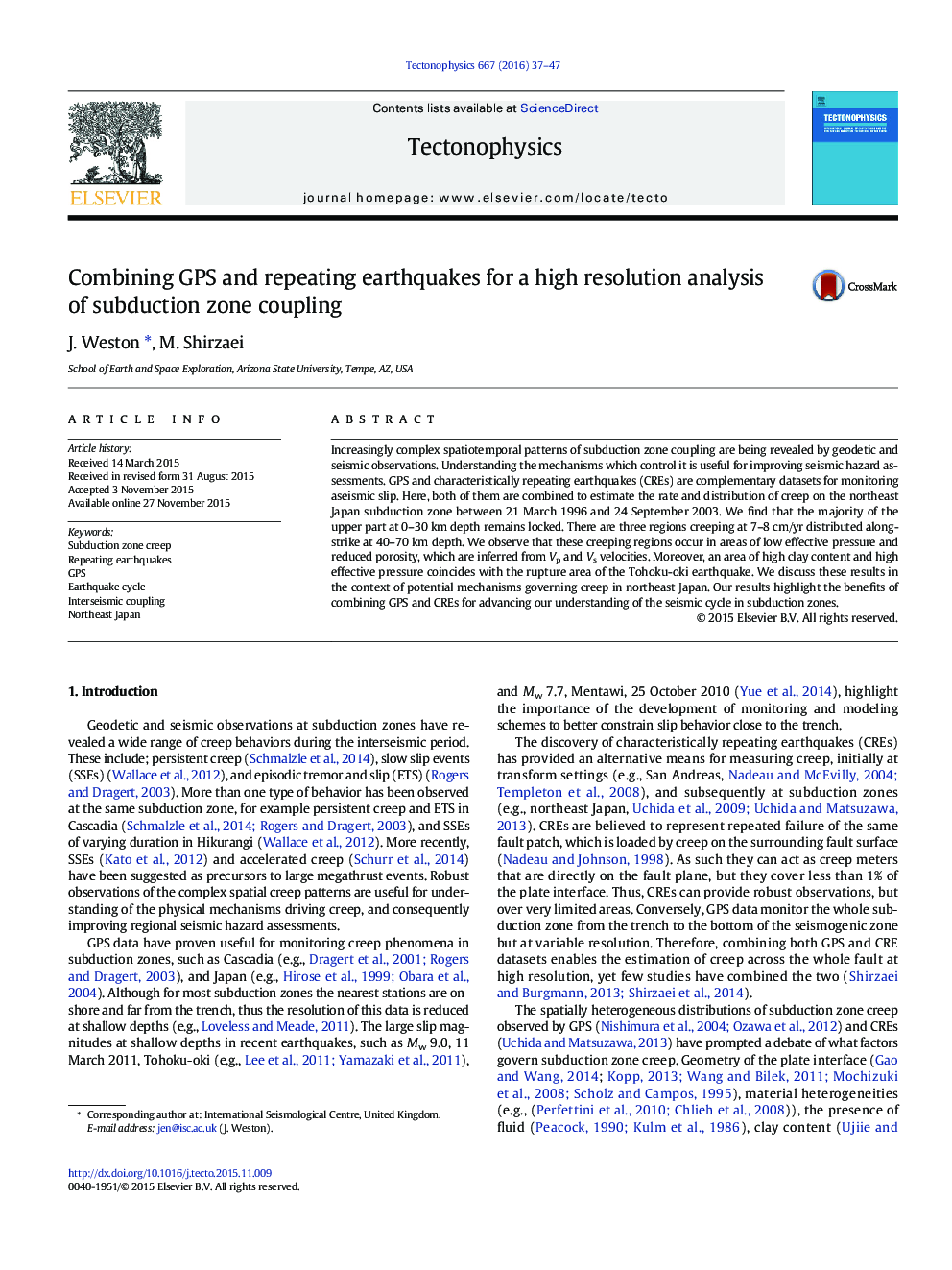| Article ID | Journal | Published Year | Pages | File Type |
|---|---|---|---|---|
| 4691402 | Tectonophysics | 2016 | 11 Pages |
•GPS and repeating earthquake data are combined to estimate coupling in NE Japan.•Vp and Vs data are used to infer effective pressure, porosity, and clay content.•Creeping areas overlap regions of low effective pressure and porosity.•In the Tohoku rupture area both clay content and effective pressure are high.•These results are discussed in the context of mechanisms driving creep.
Increasingly complex spatiotemporal patterns of subduction zone coupling are being revealed by geodetic and seismic observations. Understanding the mechanisms which control it is useful for improving seismic hazard assessments. GPS and characteristically repeating earthquakes (CREs) are complementary datasets for monitoring aseismic slip. Here, both of them are combined to estimate the rate and distribution of creep on the northeast Japan subduction zone between 21 March 1996 and 24 September 2003. We find that the majority of the upper part at 0–30 km depth remains locked. There are three regions creeping at 7–8 cm/yr distributed along-strike at 40–70 km depth. We observe that these creeping regions occur in areas of low effective pressure and reduced porosity, which are inferred from Vp and Vs velocities. Moreover, an area of high clay content and high effective pressure coincides with the rupture area of the Tohoku-oki earthquake. We discuss these results in the context of potential mechanisms governing creep in northeast Japan. Our results highlight the benefits of combining GPS and CREs for advancing our understanding of the seismic cycle in subduction zones.
